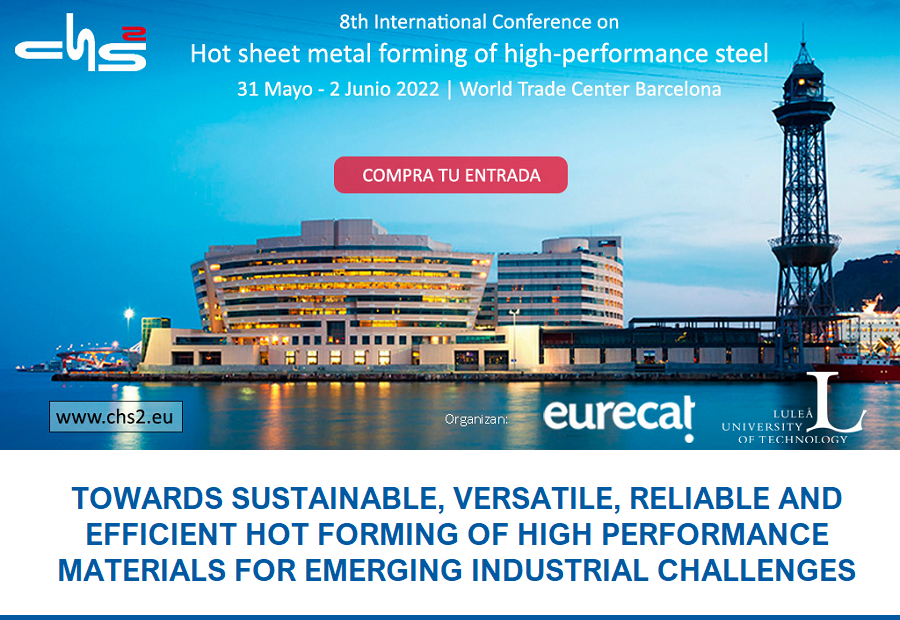CHS² 2022 – 8th International Conference on Hot Sheet Metal Forming of High Performance Steel
TOWARDS SUSTAINABLE, VERSATILE, RELIABLE AND EFFICIENT HOT FORMING OF HIGH PERFORMANCE MATERIALS FOR EMERGING INDUSTRIAL CHALLENGES
The interest in thermo-mechanical forming processes of high-performance steel, and high-performance materials in general, has grown significantly in the recent years. The automotive sector has been the main actor driving this development, pushed by the constant demands on passenger’s safety and environmental regulations. Press hardening of boron steels is now a mature technology, deployed all around the world. It showed to be unbeatable for forming complex shape parts and easy forming of high strength materials with reduced spring-back. It also allows producing parts with tailored properties under accurate process monitoring.
These benefits offer great flexibility and opens up possibilities to implement new materials in new industrial applications.
The lightweight demands that triggered the development of press hardening are still valid, but new industrial challenges are also emerging that requires sustainable, versatile, reliable and efficient forming processes.
Sustainability: New trends in eco- design stimulate the application of materials with high mechanical and also environmental performance. This brings recyclability and life cycle assessment as necessary conditions for part design.
Process versatility: many materials for lightweighting can be transformed, as steels, stainless steels, light alloys (Al, Mg, Ti) and even multi-material solutions can be approached, such as metal sheets and CFRP patches.
Process reliability and efficiency: With the rise of I4.0 concept and its associated technologies, new research lines focusing on manufacturing optimization towards the zero-defect paradigm have gained attention. Artificial Intelligence and Machine Learning based solutions are reaching the maturity. Press hardening and related thermo- mechanical processes represent technologies with outstanding potential to meet such emerging industrial challenges and it is ready to expand to new markets (as heavy duty and industrial vehicles, aerospace, etc), new applications (new needs from e-mobility) and new materials (stainless steels, light alloys, CFRP, hybrid…

